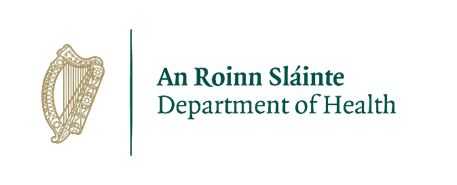- Waiting times continue to fall.
- Increasing number of patients treated.
- Increased funding announced for the Waiting List Action Plan for 2025.
The latest hospital waiting list figures published today by the National Treatment Purchase Fund (NTPF) for September demonstrate the progress achieved through the multi-annual action plan approach implemented by the Government to address long wait times for care. The latest hospital activity report, published by the Health Service Executive (HSE), shows increased levels of activity in the delivery of scheduled and unscheduled care.
The figures show significant positive progress being achieved in terms of patients waiting longest. There has been a c. 17% reduction in the total number of patients waiting over 12 months since this time last year, and a corresponding reduction of c. 27% in the number waiting over 18 months.
Improvements in terms of the length of time patients are waiting can also be seen in the progress achieved towards the Sláintecare targets. Since the pandemic peaks, there has been a c. 23% reduction in the number of people waiting longer than the Sláintecare targets, equating to over 147,000 people.
There have been significant improvements in the average length of time that patients are waiting, with the waiting time on the OPD list reducing from an average 13.2 months in July 2021 to just over seven months now.
Improvements in each of the Outpatient Department (OPD), Inpatient / Day Case Procedure (IPDC) and Gastrointestinal (GI) Scope waiting lists between August and September have contributed to an overall reduction in the total waiting list since last month.
The level of funding allocated to waiting lists for 2025 will ensure that this progress can continue to be built upon next year. Funding of €420 million is being allocated to the Waiting List Action Plan (WLAP) for 2025, encompassing €190 million for the HSE and €230 million for the NTPF. This represents an almost 17% increase (€60 million) above the significant funding of €360 million allocated for the Action Plan this year. With this significant funding for 2025, we will continue to progress towards having a public healthcare service in which everyone has timely and transparent access to high-quality scheduled care, where and when they need it.
Our acute hospitals are also delivering higher levels of activity and treating many more patients. The latest hospital rolling 12-month activity report published by the HSE gives insight into acute activity levels, with millions of patients being seen and treated annually within our hospital service. The report outlines that there was c. 3.8 million OPD, and c. 1.9 million IPDC attendances during the period covered by the report. In comparison with the levels of activity delivered in the full year 2022, these figures represent increases of c. 10% for outpatient activity and c. 11% for inpatient and day case activity.
In addition to this planned care, our hospital system also treated c. 1.8 million patients during this same period in emergency care, which represents a c. 8% increase on the full year 2022 and reflects the continuing demands on our hospitals. Despite the many challenges, our hospitals have delivered improvements which are making a real difference to patients.
Many individual hospitals have implemented measures to deliver impressive reductions in both their waiting lists and waiting times in the year to date to the end of August.
For example, in Sligo University Hospital, through the use of clinical insourcing solutions, the OPD general surgery waiting list has been reduced by 45% since the beginning of the year with an additional 476 patients being seen.
In Cork University Maternity Hospital, the IPDC gynaecology waiting list has been reduced by 25%, and the average wait time has improved by 1.2 months. This was achieved by enhancing capacity through midweek theatre sessions for complex procedures, and the introduction of new physiotherapy rooms.
In Midland Regional Hospital Mullingar, by using an external provider within the hospital to undertake additional Colonoscopy and OGD procedures, the GI Scope general medicine waiting list has been reduced by 21%, and an additional 151 patients have been seen this year.
While we have seen improvements in waiting times and in the level of activity being delivered, increased demand and higher than anticipated levels of additions to waiting lists have resulted in the volume of patients waiting across lists remaining too high. At the end of September, there were 706,480 people on the total acute hospital waiting lists, which represents an increase of <1% In the last year.
There have been c. 1.34 million removals from and c. 1.37 million additions to the acute hospital waiting lists in the year to date. Whilst having an impact on the volume of people on our waiting lists, growth in the number of referrals to our hospital system has a positive aspect as it is indicative of people accessing the services that they need, an increased awareness of services as well as expansion of services.


